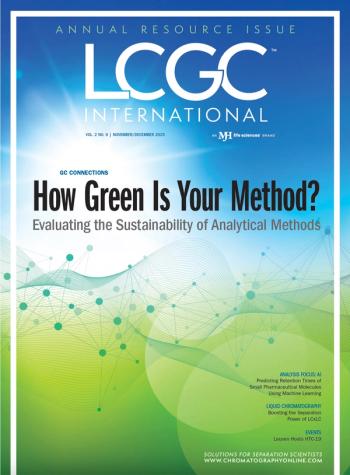
- The Column-05-15-2018
- Volume 14
- Issue 5
A Nontargeted Metabolomic Approach for Organic Food Fraud
Researchers from the University of Almería, in Almería, Spain, have developed a nontargeted metabolomic approach to differentiate organic and non-organic tomato crops using HPLC–HRAMS.
Researchers from the University of Almería, in Almería, Spain, have developed a nontargeted metabolomic approach to differentiate organic and non-organic tomato crops using high performance liquid chromatography–highâresolution accurate mass spectrometry (HPLC–HRAMS) (1).
The organic food market has seen exponential growth in the most recent decade as information regarding mass agricultural practices has become more readily available. Critiques, both justified and unjustified, have led many to seek out alternative crops grown in a more traditional way without the use of pesticides or other modern advances. The reduced yields of these growing practices are often represented in the premium that consumers pay for the products, with many costing considerably more than conventional food. However, the lack of reliable chemical markers to discriminate between these two products makes this market particularly susceptible to a less modern trend, food fraud.
As the second most important vegetable crop in the world, next to potato, the tomato (Solanum lycopersicum L.) represents an ideal crop to study in this context. A worldwide harvest of over 162 million tons annually, the tomato has also seen a rapid rise in the amount of land dedicated to its production organically. In Spain, the EU’s second largest producer, the total number of hectares dedicated to organic tomato production increased by 66.3% in 2014 alone.
Organically grown food is often tightly regulated and there are few instances where the focus has been on conventionally produced products being sold as organic. However, doubts remain as to whether this type of food fraud is indeed rare or whether the low level of incidences are because of insufficient capabilities to detect fraud on behalf of authorities. For these reasons researchers investigated the potential of technologies such as HRAMS to identify suitable markers for distinguishing organic and non-organic tomatoes. Researchers also sought to combine data from isotopeâratio mass spectrometry (IRMS) and LC–HRMS analysis by chemometric methods as a tool to get robust classification models to discriminate between different practices. Finally, the study also sought to perform pesticide resident analysis to evaluate the influence of synthetic pesticides present in the secondary metabolites.
Results indicated the tested methodology would be an appropriate approach for distinguishing between organic and conventional tomato production practices. They found that methanol was a better extraction solvent offering better performance than acetonitrile, and also tentatively identified six markers for organic tomato production. IRMS analysis was found to be unsuitable for sole analysis because the variation of organic matter and nutrients incorporated during the crop can modify the δ15N threshold data. Seven pesticides were successfully detected in conventionally grown tomatoes whereas only one was found in organic crops. While MS profiling data proved useful in combination with δ15N data for sample clustering according to farming production systems, the MS profiling data are limited to specific crops. Therefore, researchers recommended a continuous build-up of HRAMS databases with different varieties and geographical locations to ensure authenticity of organic production.
Reference
- M.J. Martínez Bueno et al., J. Chromatogr. A1546, 66–76 (2018).
Articles in this issue
over 7 years ago
Evaluating Marine Algae for Therapeutic Effectsover 7 years ago
Do You Work in an Amazing Laboratory?over 7 years ago
Restek and Girl Scouts Team Up to Promote STEMover 7 years ago
Peak Receives Royal Visit to Celebrate 20 yearsover 7 years ago
Determination of Organometal Contaminants Using PTV GC–ICP-MSover 7 years ago
Vol 14 No 5 The Column May 2018 North American PDFNewsletter
Join the global community of analytical scientists who trust LCGC for insights on the latest techniques, trends, and expert solutions in chromatography.



